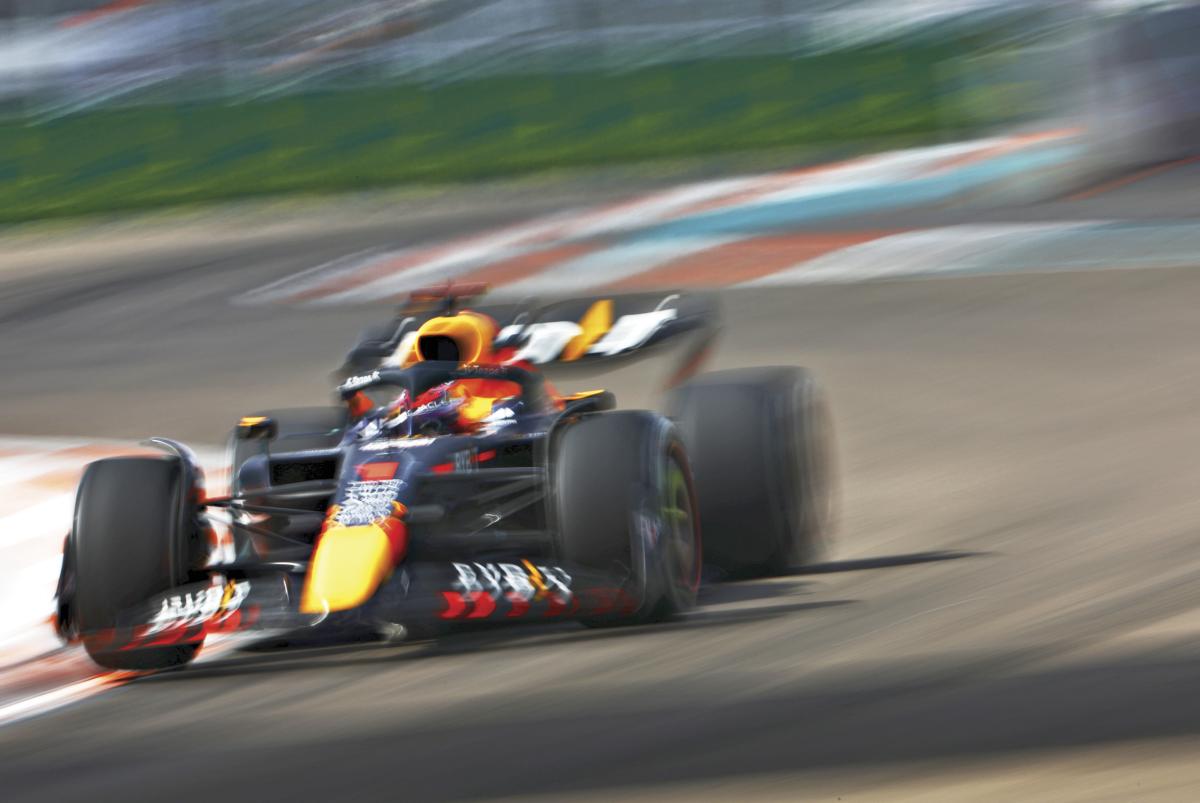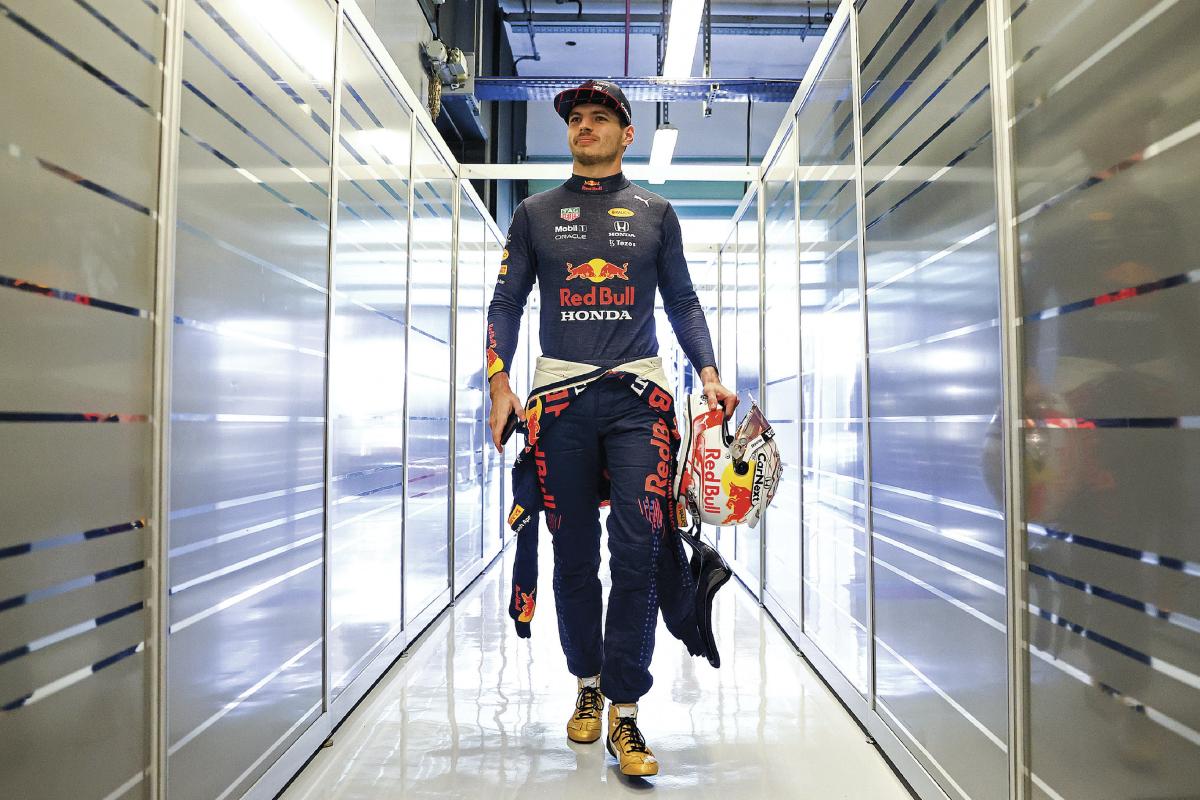Maximum Overdrive: Max Verstappen Is Formula One's Fastest Driver

A simple question drew Max Verstappen to racing: How fast can you go? That simple notion, of getting behind the wheel of a go-kart and then a car and pushing it as far and as fast as it can go, started Verstappen down the road that would see him become the best driver in the world. And he got there quickly, naturally.
“The speed, being low to the ground, really trying to find the limit [of the car] and also the limit of yourself,” the 24-year-old Verstappen says. “And of course, the engines, the smell of the fuel. These kind of things at the time were really interesting to me [as a kid].”
If anyone was born to race, it was Verstappen. His father, Jos, is a former Formula One driver, and his mother, Sophie Kumpen, was an elite go-kart racer. So young Max spent plenty of time around the track, but his parents never pushed him to drive.
But when Max, who was born in Belgium but competes for the Netherlands, decided he wanted to get into karting, Jos insisted that he give it his full attention. At the track, if other kids were kicking around a soccer ball Max would be with his dad, talking about the kart or the track.
“I fully understand why,” says Verstappen. “[You have to have] that mentality from a young age to just work harder, because there are a lot of talented kids and drivers in the world who can all do a fast lap. But it’s about just going that extra step and saying, How can I be better? How can I beat the other kids?”
So young Max would pick Jos’s brain while also constantly thinking about how he could improve. It also helped that he had the natural gifts necessary to be a great driver. Outstanding reflexes. Hand-eye coordination. The ability to focus. And a lack of fear.
A Formula One car can travel at speeds in excess of 220 miles per hour, and even karts slide around the track at dizzying speeds. And since the driver is so low to the ground, it feels like the machine is moving even faster. A driver who thinks about the danger is a driver who won’t last very long.
“Cycling through New York is also very dangerous, isn’t it?” says Verstappen. “I think there is a higher rate of having an incident there than what I have in F1. So it’s just how you look at things. I mean, it’s also easy to slip in the shower.”

On The Move
Verstappen quickly worked his way up through the karting ranks, and by the time he was 17 he was driving in his first Formula One race. In the 2015 season he became the youngest full-time driver in F1 history when he raced for Toro Roso, which was then the equivalent of the B-team for Red Bull Racing. The following year he got the call-up to Red Bull, and he won his first race in his debut with the team, becoming the youngest winner in F1 history (18 years, 228 days).
Verstappen added nine more Grand Prix victories and three top-four world championship finishes in the next four years. He went into the 2021 season as one of the favorites to win the drivers championship and break the stranglehold that Mercedes had put on the rest of F1. The team had won the previous seven titles, with six of them captured by Lewis Hamilton.
Hamilton and Verstappen would stage an epic battle throughout the 2021 season. The pair finished 1–2 in 13 of the first 21 races of the 22-race season. Entering the finale in Abu Dhabi, they were tied atop the drivers standings. The race came down to the final lap. Hamilton had been leading, but a caution allowed Verstappen to catch up to Hamilton and ultimately pass him and drive his RB16B (the car he is playing with on the cover of this magazine) for the title.
That happened last December, and the 2022 season didn’t start until March. Verstappen was able to stay fresh by engaging in one of his favorite pastimes: sim racing. For years drivers—especially in NASCAR—have used video games to learn the proper racing line at new tracks. And now e-racing has become so realistic that drivers use it as an even bigger training tool—as well as a way to have fun. “It’s becoming more and more professional where it’s the same real life,” says Verstappen. “You have to work on the setup strategy. You have to do your prep before you actually enter the event. For me, it’s like, I never really switch off in a way once I stop racing F1 and I am in my off season. I still do the same things. I do pit stops and overtakes. I have to defend. I do long endurance races with teammates. So once I jump back in the F1 car, it feels like I never left.”
Fittingly, Verstappen picked up right where he left off when the 2022 season started, winning five of the first eight races. Included in that run was a victory in the inaugural Miami Grand Prix in May.

Formula One has historically struggled to make an impact in the United States. The 1991 U.S. Grand Prix was held in front of fewer than 20,000 fans in Phoenix, Arizona, and it was nine years before another race was held in the States, at Indianapolis Motor Speedway. That venue became most well-known in F1 circles for a disastrous event in 2005, in which only six cars competed because none of the other teams had tires that were safe enough to race on. And TV ratings have historically been minuscule, in part because so many races are held in Europe and Asia and start early in the morning in the U.S.
Now, though, the sport is undergoing an American renaissance. A new facility in Austin, Texas, began hosting races in 2012. The popular Netflix show Formula 1: Drive to Survive has introduced the sport to a new group of fans. At the 2022 Miami Grand Prix, Verstappen and the rest of the drivers were treated like rock stars, as celebrities like David Beckham, Michelle Obama, and Venus and Serena Williams were on hand.
“It was incredibly crowded on the track, but also in the city,” says Verstappen. “People were waiting in front of the hotel. Of course, we’ve had this already in European races, people trying to get pictures and stuff, but now you can really see the change in the U.S.”
There will be more change next year, when a third U.S. race, in Las Vegas, is added to the schedule—giving another set of fans the chance to be dazzled by the fastest man around.
